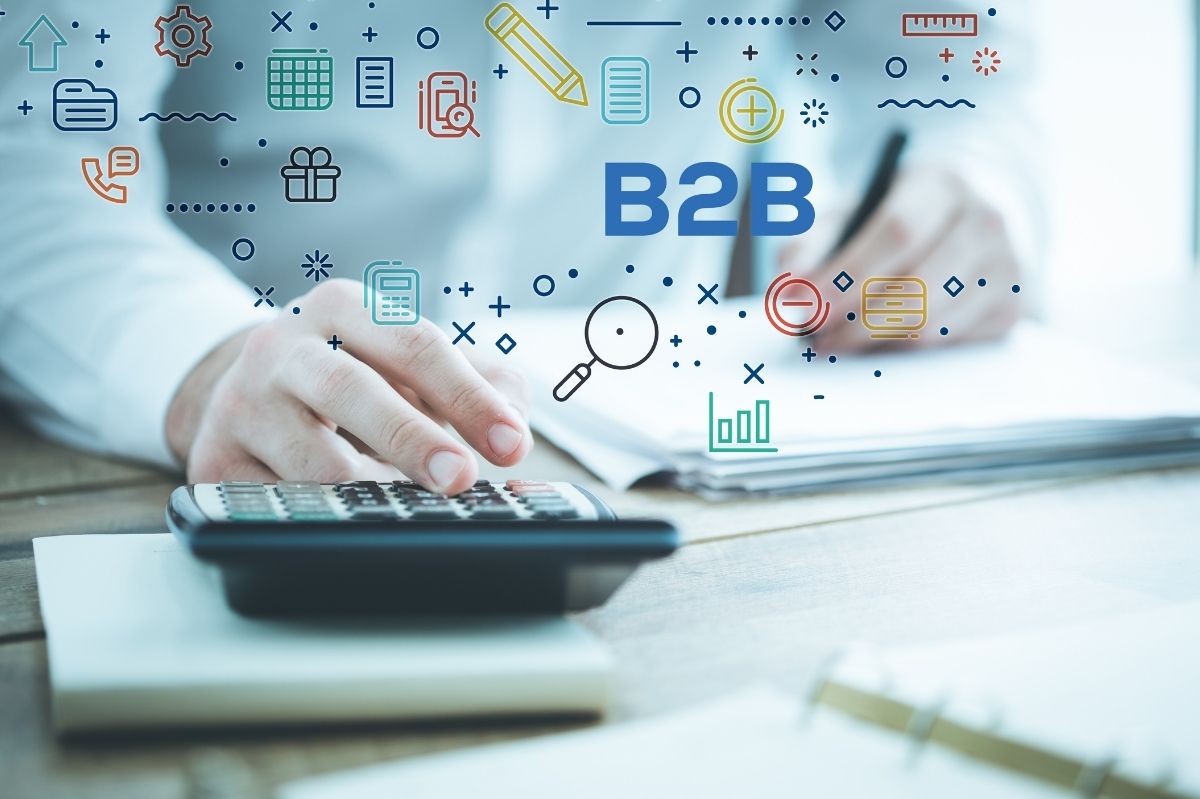Table of Contents
What is social selling in the Polish business context?
What is social selling in the Polish business context? Is it really sales, or is it more marketing, relationship building, close to sales, but not sales itself?
A: Social selling is community-based sales. Many people associate it with the LinkedIn platform. However, it is certainly not limited to it. It is not LinkedIn selling, but sales based on a community centred around us – as experts – and our company.
advertisement
You mentioned the LinkedIn platform, which is associated with business development, but what other social selling channels? Should companies focus on a specific one? Does it depend on the industry, product or type of offer?
I think it is more appropriate to ask where we can build a community around our sales goals. Depending on the industry, products and even customers, these will be completely different spaces. Create a community where our customers are. I would like to add that social selling is not limited to digital media. I can give examples of communities that operate exclusively in the real world and are extremely effective.
Since social selling can be so broadly understood
Since social selling can be so broadly understood, there is probably no one and only right answer to the fundamental question: how to start? After all, I will ask this question: how do you implement social selling in your company?
Yes – social selling should be implemented gradually. This type of program can take a lot of energy, time, commitment and money on the part of the organizer. It’s easy to make mistakes in the initial phase. That is why it is worth carrying it out wisely, in stages, without risking the budget. At the outset, you need to identify the community that we can build with the least resources to check whether these activities translate into sales, and only in the next step do we scale the project. This way of development resembles the operation of startup. We build a product with the smallest functionality and test the hypothesis on the market. If the verification is positive, we increase the scale of activities. If any of the elements do not work, we have time to reflect on the reasons, and what can we change? We improve and test again.
You used the word ‘verification’. How to measure the effectiveness of social selling activities?
I always encourage companies that want to introduce social selling to set themselves sales goals, not marketing ones. For example, the marketing goal is to generate leads, which is quite an enigmatic indicator for many people. In my opinion, this indicator by no means translates into sales, and yet we are focusing on this goal. In the early stages of implementing the social selling process, you should adjust your sales expectations to the possibility of obtaining them. If we have the top ten clients we want to reach and are listed companies, then the assumption that we will meet our goals in the first three months is wishful thinking. In such a case, it is better to define an intermediate goal, e.g. building relationships with people from these ten companies, establishing an initial dialogue, exchanging information, but with the back of your head,
How is social selling related to the digital transformation
How is social selling related to the digital transformation, the acceleration of which has been clearly observed in recent years? Should social selling support other forms of sales, or can it be treated as competition?
When talking about e-commerce, we often have a B2C relationship at the back of our heads. In my answer, however, I will limit our discussion to B2B because this is what the upcoming conference organized by the ICAN Institute is about. Nevertheless, these recommendations can also be translated into B2C.
As I mentioned initially, the digital space is attractive due to its low cost, low barrier to entry, and access to the right contacts. First, check out your social media channels. If our clients expect professional interaction in a given medium, it is worth taking advantage of it. Moreover, online and offline complement each other. We often carry out activities that are embedded in both spaces, e.g. we build a community around a specific problem or challenge by reaching online, we use LinkedIn, organize webinars and contact clients, and at the same time, we can create design thinking workshops or establish a think thank – a kind of real community that wonders how to solve problems and address challenges. One action does not exclude the other. The community doesn’t have to mean digital relationships by default because the community is people. It is worth remembering because the existence of a common understanding of the connection between the word community and the digital world often leads to erroneous and costly implementations of social selling in marketing and B2B sales.
I admit that I am more used to thinking about social selling in the B2C area
I admit that I am more used to thinking about social selling in the B2C area, where it is often understood as a complement to e-commerce activities, but it can also be treated as competition for such activities. Maybe I will deepen this issue – I often come across the thesis that social selling, narrowly understood as actions through social media, is in a sense the transfer of the business model to an area over which we do not control. The recent failure of Facebook showed this – sometimes it turns out that platforms such as LinkedIn, Facebook, Tik-Tok stop working, and then our business also stops working because we have shifted sales too much in the social direction. This is an extreme example of a situation where social selling competes with our own online store. We have neglected a shop because we moved our activities too, for example, LinkedIn, then the system is paralyzed with a failure, sales are not working, and we have a problem. So social selling is supporting e-commerce or rather a competition? How do you see these accounts?
When thinking about LinkedIn and the digital space, and actually about all digital tools, it is easy to fall into the trap in which using them is an end in itself and is sometimes treated as a remedy for all our problems. Social media literacy does not necessarily translate into sales. So if we are talking about the channels or tools used, the question of their selection is, in my opinion, a secondary matter. They must bring the expected results. Technical problems can always arise, and we may lose touch with the built community, but our relationships with people from this milieu will survive. We should try to fix them somewhere at the end – in the form of a database or other repository.
We should also remember that B2B and B2C social selling activities are two different worlds. In B2B, we operate more in the social selling model, and in B2C, more social marketing, i.e. we communicate messages to many people. In B2B, we work with much smaller groups; we are looking for honest dialogue and information exchange, while in B2C, although we often declare such willingness, we are somewhat interested in the opinion of a group of consumers, not individual people.
What is the difference between social selling in B2B and the sales methods
What is the difference between social selling in B2B and the sales methods that have been used so far? I understand this difference, but in that case, I will say a little provocatively: I do not see anything particularly new in social selling activities in the B2B area. Selling has always been associated with establishing relationships and building some form of networking, be it in the real world or via telephone or digital activities.
It differs in the number of people we interact with per unit of time. In classic sales, we aimed at making a call or making an appointment to talk to one customer. However, in the community, we work with a group – more or less numerous – focused on one topic.
I will give you an example of the last webinar we did for our client. A trader from a company operating in the light industry noted that the regulations on the taxation of certain industrial solutions would change on his market, as the European Union will introduce additional fees. He also remarked, very rightly, that his clients were not aware of it. What does he do? He organized a meeting in the digital space, inviting independent experts to the discussion: a lawyer and an expert who closely follow trends in this particular area. In such a group, they discussed what awaits the company’s customers in the near future. Will they have to pay more? Who will pay for it? How much more? There was an entire event organized around this topic that would ultimately lead to sales benefits, and it involved a lot of people. Here is the main difference:
Are there any industries in which social selling will be particularly good for you?
Are there any industries in which social selling will be particularly good for you? Or those that shouldn’t even do it? We both realize that social selling is now in fashion; everyone wants to invest in this type of activity – or maybe unnecessarily? In the case of some enterprises, it will probably not work at all. For others, sales will shoot up sharply, soar exponentially. How do we know what it will be like for our company?
Each industry is suitable for this, each will be difficult, but not all will pay off. Therefore, it is worth starting with a prototype first because a large-scale social selling program requires budget, energy, time and the full commitment of a group of people. Therefore, we should consider whether the budget invested in the development of this tool, its implementation, digital transformation of sales will bring the expected results both in the short and long term if it turns out that it is easier to sell through other channels here and now, then perhaps we should not implement such a tool. Maybe it doesn’t make sense at this stage. The question here, of course, arises: what will happen in two or five years? Shouldn’t we sometimes start preparing for a change, e.g. on the buyers’ side, before it happens?
Can we determine if a given industry is suitable for social selling activities? If we have clients who are keenly interested in our field, we have the nucleus of a community. It is scattered and disconnected, but if someone buys our products, especially specialized ones, they need a community of people similar to them. Such a person will not discuss such products during the family dinner because he will not find understanding. Aviation bearings are not an exciting topic for all of us, but there is no doubt that it is at the heart of their working life for a certain group of people around the world. That is why building such a community in every industry is possible, although it will not be easy, especially in B2B, technological and industrial sectors.
Is there also a chance that through social selling, we will increase the scale of sales and reach completely different, new groups of customers?
Definitely, I often see this benefit in implemented social selling programs. New communities make it relatively easy to reach people we didn’t have access to before, especially if we start building an expert community rather than a trading community. Suddenly, it turns out that representatives of the banking world want to talk to us about the development of non-cash payment technology, the doors to which were previously virtually closed for us. But if we organize a panel of the hundred most important people in Polish banking, which is discussing a cashless future, suddenly the door opens, one by one.
The second benefit we see often is deepening and building a community even with those customers we already serve. This is especially important in the case of key customers. It happens that in these companies, we only serve one segment of their activities, and somewhere nearby, in another department, there is an interesting business that we were not supposed to reach. This is done in the following way: “I got an inquiry from another department, and before that, I did not know that this department had needs that I could fulfil, because I either had no contact with this department, or I didn’t even know it existed at all”.
Another barrier that we easily overcome thanks to digital communities is reaching in terms of geography. We implemented a social selling project aimed at reaching a fish processing company from Scandinavia. In classic sales, we would encounter a language barrier; there would be a need to move, it would be a long-term and burdensome process for the company and the traders themselves. On the other hand, it was easy for us to identify conversation partners in the digital world, invite them to a discussion, and observe their reactions or openness to our proposals in real-time.
I have already asked how to start, but in the end, I come back to this question
I have already asked how to start, but in the end, I come back to this question, albeit in a different form. How would you encourage those people considering implementing social selling activities in their company to take on this challenge boldly?
I encourage you with all my heart. Social selling is all about sales benefits. Looking at typical B2B processes, I am convinced that 80% of enterprises have unrealized benefits achieved through such activities. Only in small steps so that any attempt to implement it does not risk losing a large budget. Only when measurable, measurable effects appear should we scale our activities. In this way, we safely come to solutions on a larger scale and multiple results.
I know many companies that cannot imagine returning to the old, traditional sales reality. Social selling is a great tool, especially for companies that sell complex solutions that require large amounts of money during the sales process. If we sell an IT solution and the sales time takes several months, probably social selling will be a good alternative. If we sell tools, solutions, or services of very high value or want to acquire a customer with significant lifetime value with whom we will work for years, social selling will probably be perfect.
In addition, building a community of experts around our service or solution allows us to advance from a transactional supplier to a strategic partner. When asked, “what is important to me?”, Our clients answer that the price is essential to them, it means that our company is at the transactional level. If we want to become a partner for them that supports their business with its products, we must move our thinking to a strategic level, become a strategic supplier. We can achieve this by means of social selling and based on the knowledge of experts.
Also Read : Netflix Prize: How To Use The Power Of The Community In Business







